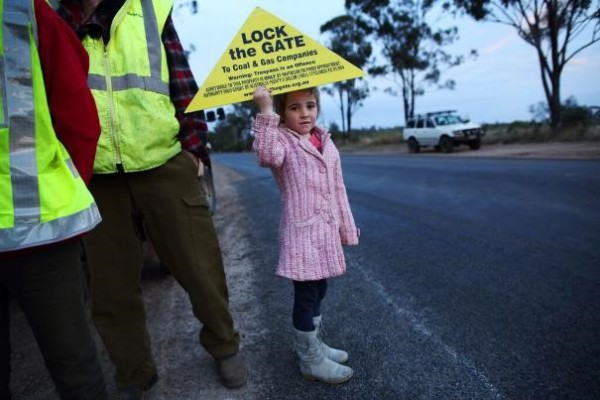What could be a more appealing concept?
The idea behind the recent ‘Lock The Gate’ Movement in Australia is that mining companies wish to prospect and remove underground resources, and consequently cause damage to infrastructure, the natural environment and human health, and the owners of the properties above these resources wish to avoid such damage, and hence to keep the miners out.
The basic problem is that ‘land owners’ have property rights over only the top few cm of the earth’s surface, plus whatever is growing or built above the ground, whilst what’s deeper below the surface belongs to someone else, typically Government. Government can then assign access and removal to mining companies.

This is obviously a recipe for conflict as mining companies must usually access underground resources via above-ground activities and infrastructure, possibly conflicting with what land owners are doing. Furthermore, even if mining companies gain access to resources via activities that are completely underground, there is always the likelihood that such activities will affect what happens at the surface. Underground mining can affect water that is underground (known as ‘ground water’), which is often an important source of water for agriculture and drinking. Mines, be they ‘open cut’ or underground, can have serious negative impacts at ground level.
The ‘Lock The Gate’ Movement began out of conflict between coal-seam gas (CSG) mining, by a technique known as ‘fracking’ and farmers in Queensland, Australia. Here water and various additional chemicals are pumped into a seam of coal containing significant amounts of ‘coal gas’. This results in the gas being released and brought to the surface, where it can be captured for use in power generating systems.
Mining such a resource therefore leads to available energy for consumers and profits/ jobs for miners. It is therefore hardly surprising that many would support and encourage this activity.
However, there is significant and growing concern about adverse local impacts on the environment and human health. The gas, along with chemicals used and other by-products of mining, can pollute water, both ground and surface, some of which provides for human drinking and agriculture. The same processes, plus activities associated with the mining and associated with other infrastructure (e.g., roads, vehicles, trains etc.), can pollute air and water.
Though there is no simple and easy resolution to this conflict, it seems clear that any resolution will have to include the following ingredients:
Complete and honest evaluation of all the costs and benefits, to the environment and to people, of mining for CSG and other underground resources;
Avoidance, then minimisation and mitigation, of any adverse impacts, from mining or associated activities, on the environment or on landowners (including those renting or leasing the land);
Adequate compensation to landowners adversely affected by mining activities;
Adequate offsets for any adverse impacts of mining on the environment; and,
Acceptance that, because of ongoing anthropogenic climate change, most fossil fuels will have to be left in the ground.
It’s all quite straightforward and reasonable, isn’t it? And it will happen, if we all choose to make it happen.
MAHB-UTS Blogs are a joint venture between the University of Technology Sydney and the Millennium Alliance for Humanity and the Biosphere. Questions should be directed to joan@mahbonline.org
The views and opinions expressed through the MAHB Website are those of the contributing authors and do not necessarily reflect an official position of the MAHB. The MAHB aims to share a range of perspectives and welcomes the discussions that they prompt.
